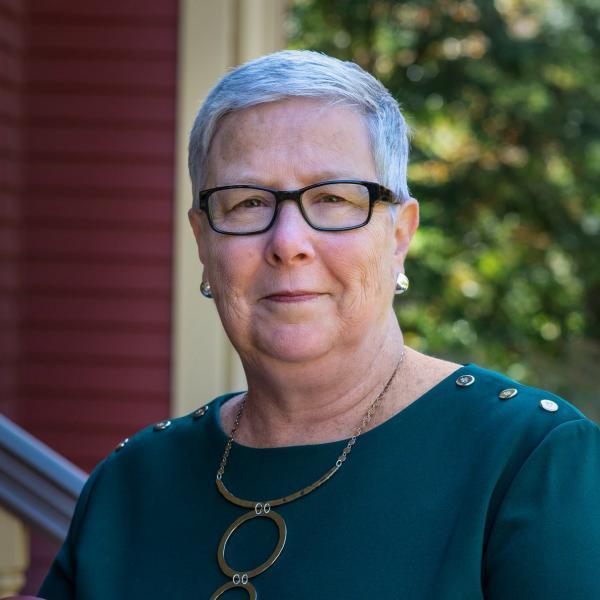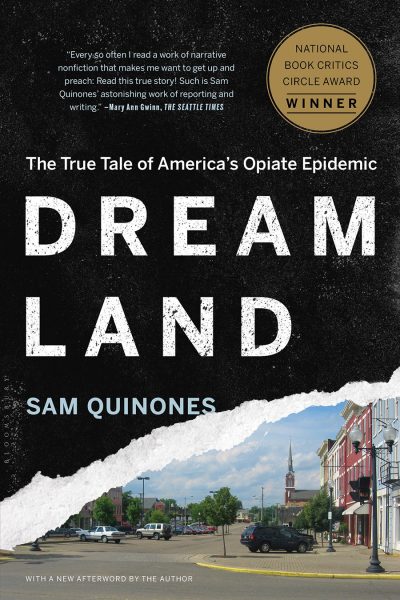Author/Journalist to Unravel Opioid Epidemic
Published 03.17.2017

by Dr. Davie Jane Gilmour
President of the College
The statistics are sobering. Pennsylvania ranked sixth in drug-related death rates in 2015, according to the Centers for Disease Control.
Pennsylvania is one of 36 states nationwide where drug abuse is now the leading cause of injury deaths, eclipsing even those caused by motor vehicle accidents, based on data from the Trust for America’s Health and the Robert Wood Johnson Foundation.
The CDC also reports that opioids – those received by prescription and those obtained illicitly – are the principal source of drug overdose deaths. “Opioids were involved in 33,091 deaths in 2015, and opioid overdoses have quadrupled since 1999,” the CDC says.
Another CDC report noted that health care providers wrote 259 million prescriptions for painkillers in 2012, enough for every adult in the United States to have a bottle of prescription painkillers. Other data reveal that more than three-quarters of heroin addicts trace their addiction to prescription opioids.
The data compiled for 2016 will almost certainly show the opioid epidemic worsened last year. Do a Google News search for “opioid deaths” or “opioid epidemic” and prepare to be astounded. It’s impossible to scan newspapers and other online media any day of the week and not find multiple stories about how the epidemic has touched virtually every community in America. Who can forget the compelling police photo of the Ohio parents slumped in the front seat of their vehicle, both unconscious from heroin overdoses, as their 4-year-old son sat helpless in the back seat? 
Perhaps no one has distilled and illuminated the circumstances creating this public health crisis better than journalist and author Sam Quinones, who will present a program on his award-winning narrative nonfiction book “Dreamland, The True Tale of America’s Opiate Epidemic” on Monday, April 3, at 7 p.m. in the Community Arts Center, Williamsport. The presentation, sponsored by the Clear Focus Affinity Community at Lycoming College, Penn College, UPMC Susquehanna, Project Bald Eagle and state Sen. Gene Yaw’s office, is free and open to the public.
I urge everyone to attend and learn more about this epidemic, which is riddled with misconceptions. A master storyteller and dogged reporter, Quinones will show how the unconstrained prescribing of pain medications in the 1990s, coupled with the production/distribution of cheap and potent black tar heroin from Mexico, fueled the crisis, which is being dealt with daily by law enforcement, public health agencies, health care professionals, educators and others.
The education part of the heroin/opioid story is particularly important to me. I count among my community affiliations service as the chair of Project Bald Eagle, a nonprofit organization leading coalition efforts to stem the tide of the heroin epidemic through education, prevention, treatment, enforcement and data monitoring. Education is key, for this epidemic is not limited to the types of individuals many people would associate with illicit drug use.
Addiction doesn’t discriminate by class, race or gender, and it is not a problem confined to urban areas. According to the Drug Enforcement Administration, 12 rural Pennsylvania counties were among the top 20 with the highest rate of drug-related deaths in 2015.
Serving with me on the Project Bald Eagle Board is Sen. Yaw, who also chairs The Center for Rural Pennsylvania, as well the Penn College Board of Directors. The center conducted statewide hearings to gather information on heroin and opioid use and abuse in communities, producing a comprehensive report on the heroin epidemic in Pennsylvania. The center focuses on educating policymakers, informing the public and enhancing current policies related to heroin and opioid addiction treatment. This effort played a seminal role in the Legislature enacting a series of laws late last year addressing how opioids are prescribed and monitored.
At Penn College, I’m proud to say our campus police force was one of the first regionally to be trained and authorized in the use of Naloxone, a medication approved by the Food and Drug Administration to prevent overdose by opioids like heroin, morphine and oxycodone. Naloxone saves lives by blocking opioid receptor sites, reversing an overdose’s toxic effects.
We also provide educational and prevention programs to the college community throughout the academic year, and resources are available for faculty and staff to make referrals when students are exhibiting signs of problems caused by drugs and alcohol or other issues.
Quinones’ compelling book shows how one community was able to pull itself out of economic disaster fueled by drugs. Positive outcomes can be achieved in our communities, too, if more light is shed on the problem. The increase of addiction and drug-related deaths has prompted citizens on all sides of the issue to come together to find ways to prevent abuse and to ensure that help is available for those who need it.
Change won’t come instantly; it took a long time for this epidemic to unfold, and it will take a long time to manage it effectively. But we’re on the right track.
I encourage everyone to learn more about this communitywide problem by attending Sam Quinones’ presentation on April 3.
